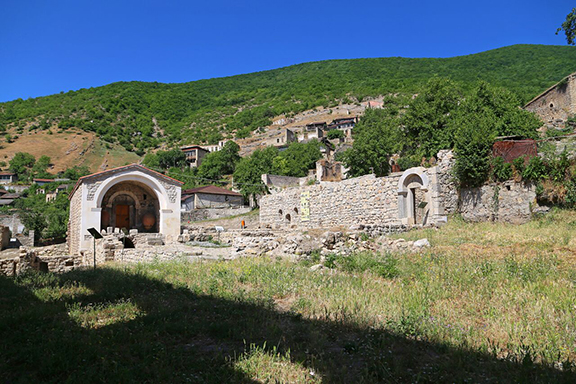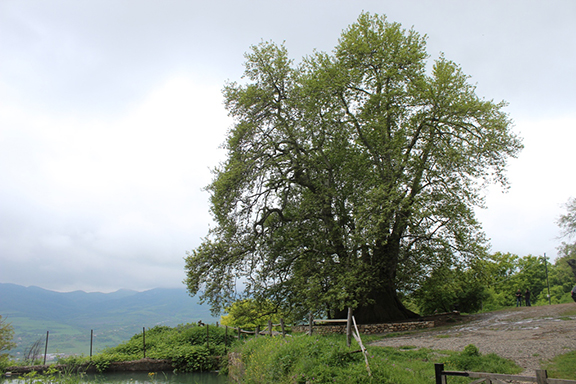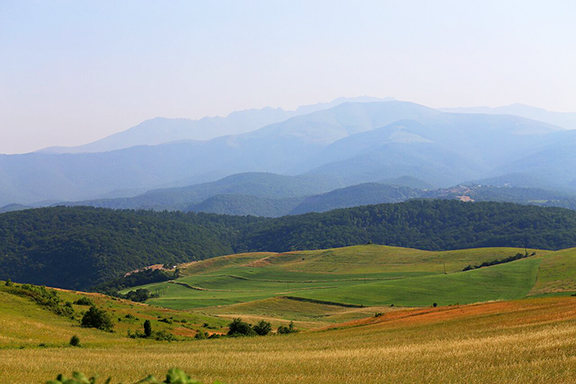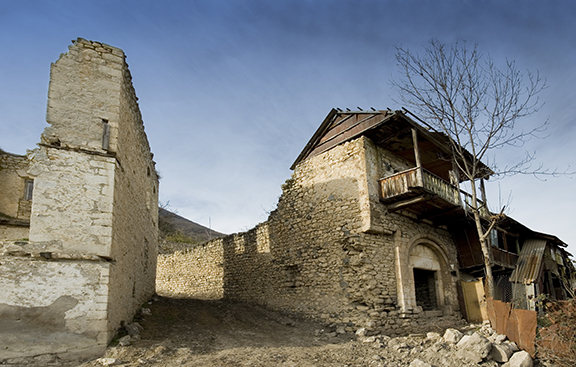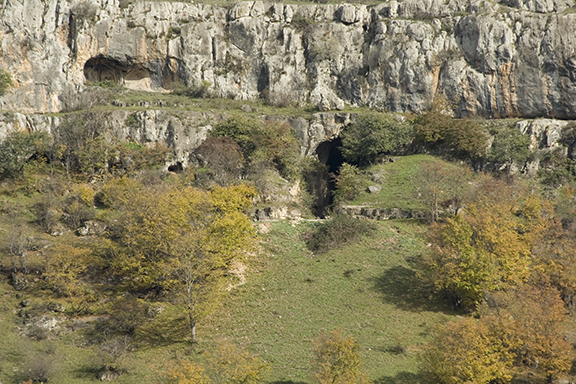EDITOR’S NOTE: Recently Asbarez was contacted by the Artsakh Tourism Department, which works under the Nagorno-Karabakh Republic’s Economy Ministry, with a request to publish a series of articles about tourism in Artsakh and the growing industry that has been burgeoning there in recent years. We begin a series on Artsakh tourism in hopes that our readers who visit Armenia, consider Artsakh as a destination as well and share these articles with their friends—Armenian and non-Armenian alike.
Today we will “take a trip” to the one of main travel routes of Karabakh. Most of the readers don’t know about special travel itineraries which were designed and are being developed by the government of the Nagorno-Karabakh Republic now. What do we need to know about these itineraries while traveling inside Karabakh?
To find out, let’s start from the sunny Southern route which originates in the capital of Nagorno Karabakh-Stepanakert (From “Mazi bridge” area) and continues to the Araks river valley.
The itinerary should be started by visiting Karkar archaeological site, where about 2700 years old town was discovered several years ago. It’s located on the rocky hills about 1 kilometer far from the road and travelers should either hike there or reach with 4×4 vehicle. It’s really worth place to be, besides the archaeological site is located in high hills and a beautiful panorama of Stepanakert opens from there.
Turning from the highway to the West we find ourselves in Hunot Canyon, one of the most beloved places for locals and travelers. The Canyon is one of the best places for hikers, as I have already written on my previous publication, three routes with easy, middle and difficult passabilities are made for travelers. The Canyon represents a unique ecosystem with plenty of caves, forests, a river, several springs, waterfalls and rocky mountains. Imagine, everything in one place, isn’t it wonderful? Add several historical monuments like mills, a bridge and a village and the outcome will be “Hunot Canyon” state historical-natural reserve. It’s an appropriate place to have picnics as well, so if your trip to the Canyon coincides with your mealtime, you can have it there. The responsive staff will support if necessary.
Generally the villages of Artsakh are of special interest. This route is rich with ethnographic Artsakhian villages, with retained authenticity and architecture of late middle ages. One of them is Avetaranots village, which is located about three kilometers West from the highway. The 5th century village Avetaranots has several churches and ruins of Princes’ Palaces, preserved from the late middle ages.
Continuing our trip we approach to the recently restored old and cozy basilica church of Pirumashen, which is located just near the road. During the restoration works some pagan tombstones with interesting ornaments retained from a pre-Christian temple were found here, immured to the walls of the church.
The route passes through Karmir Shouka village which is one of the winery centers of Artsakh (about winemaking and routes on a special “tasty” post). The next site is located two kilometers north from the highway. Locals call it Tnjri tsar (Plane tree). More than 2000 years old plane tree is a pride of Artsakh people. With 54m height and 27m base perimeter it considers to be one of the world natural wonders. Near the Tnjri a rest area was built for providing food service.
Travelers should deviate from the route 12 kilometres north-east to visit one of the main spiritual centers for all Armenians-Amaras monastery which was built in the 4th century by Gregory the Illuminator. Some interesting facts about Amaras: the remains of the grandson of Gregory the Illuminator-Gregoris Catholicos are buried in the church, one of the first Armenian schools was opened here, in 2014 archaeоlogical excavations discovered the north entrance to the tomb of Bishop Gregoris, the church of the monastery was rebuilt four times, last time it was rebuilt in 1858 by means of Shoushi residents or the residents of Shoushi.
Returning to the road we approach to Azokh Cave state historical-natural reserve, where the jaw bone of Neanderthal man was found. Several caves connected with each other form a labyrinth with archaeological sites, stalactites and with a huge population of endemic bats living there.
The road takes us directly to the former residence of Meliks, to Togh village. Here, a remarkable Meliks Palace was discovered and restorated in order to protect this architectural symphony for further generations. The palace consists of several buildings with a unique Armenian architecture. An archaeological museum was opened in one of those buildings. Besides the palace two 17th century churches are located in the village.
Near the village of Togh Gtchavank monastery is located which was one of the main political and spiritual centres of medieval Artsakh. Some restoration works are being implemented in the church at this moment.
For having a little rest let’s visit Mets Tagher village where an entire ethnographic district was restored. After having tea with herbs in a traditionally reconstructed tavern, we continue our trip to Hadrout city. Not far from the city a cosy village of Tyak is located.
Hikers will also like to climb on Dizapayt mountain on the top of which ancient Kataro monastery was built. Everyone should climb on the hill for enjoying the beautiful panorama from 2500m above the sea level.
On the way to our last point, we pass near “Karavansaray” coaching inn, which was built in the 17th century and served as an accommodation for Iranian and Armenian merchants. The coaching inn was located on the main caravan route which connected Karabakh to Iran. Once a noisy shelter for merchants now serves only as an interesting architectural monument that is protected by state.
Our last point is the Arax river valley. Fishing is widely spread in this area and fishers from all over Karabakh come here to fish a trout, a catfish or a sturgeon. Here, you will also see two ancient bridges, stretched above the Araks: Old and New Karavaz bridges were built in the 5th and 13th centuries.
Now some tips on the “sunny trip”
The length of the route is about 100 km without turning to the sites near the route. It’s possible to travel one day to the point and back, skipping some sites on the route, but you can also divide your trip into two parts: reach to Jartar city, not far from Amaras monastery, where a tourist bower is located, after an overnight, continue the trip to the Araks river valley. Or after visiting Amaras monastery go directly to Hadrout city and after an overnight travel to the Araks, on the way back to villages of Tyak, Togh, Mets Tagher and Azokh. If you are a hitchhiker, be sure that you will reach your planned destination: the drivers pick up everyone who needs help.
Source: Asbarez
Link: KARABAKH TRAVEL: Take a Trip on Artsakh’s Southern Route

